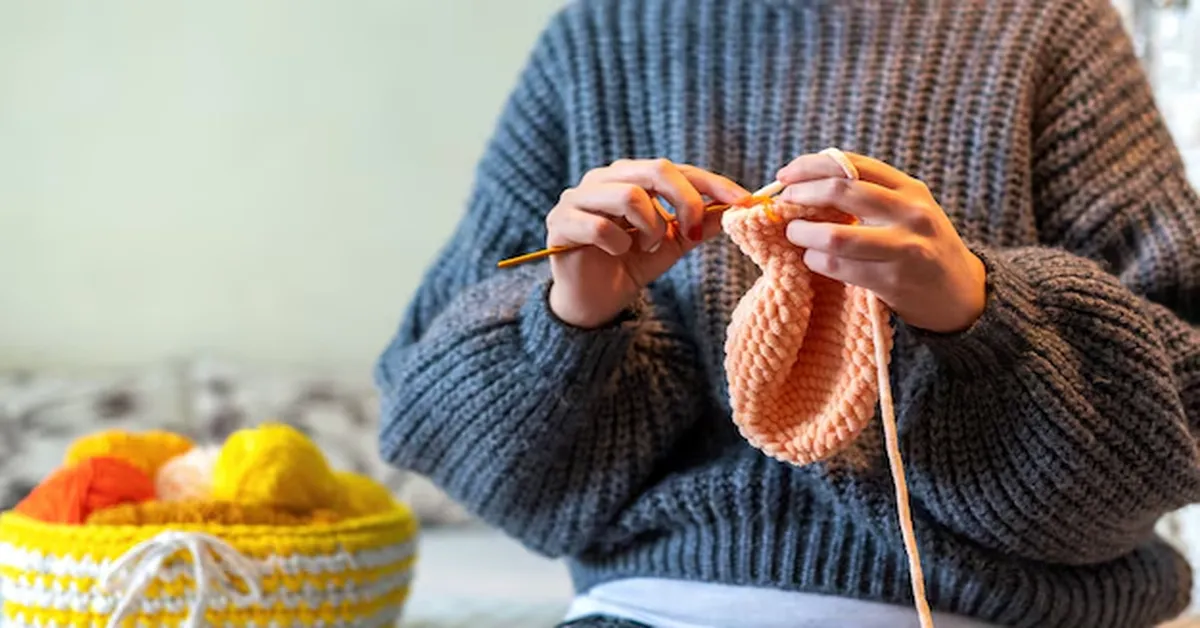The half double crochet (HDC) is a versatile and essential stitch in crocheting, sitting between the single crochet (SC) and double crochet (DC) in height. It is a favorite among beginners and experienced crocheters alike because of its balance between simplicity and texture.
In this guide, you’ll learn everything about the half double crochet stitch, including how to create it, variations, common mistakes, and tips for using it in different crochet projects.
What is Half Double Crochet?
The half double crochet (HDC) is a fundamental crochet stitch that is taller than the single crochet (SC) but shorter than the double crochet (DC). It creates a dense yet flexible fabric, making it an excellent choice for scarves, hats, blankets, and garments.
Why Use Half Double Crochet?
✔ Faster than single crochet but still provides a tight weave. ✔ More stretch and flexibility than a single crochet stitch. ✔ Great for textured patterns and versatile in many projects. ✔ Ideal for beginners learning basic crochet techniques.
Materials Needed for HDC
To start with half double crochet, you’ll need:
- Yarn: Any type of yarn works, but worsted weight yarn (medium #4) is beginner-friendly.
- Crochet Hook: Choose the appropriate hook size based on your yarn weight (e.g., 5.0mm – H-8 for worsted weight yarn).
- Scissors: For cutting the yarn.
- Tapestry Needle: To weave in the ends.
How to Do a Half Double Crochet
Follow these step-by-step instructions to create a half double crochet stitch:
Step 1: Make a Foundation Chain
Start by making a foundation chain (ch) of any number of stitches + two extra chains for the turning chain.
Step 2: Yarn Over (YO)
Wrap the yarn around your hook once before inserting it into the third chain from the hook.
Step 3: Insert Hook into Chain
Insert your hook into the stitch, ensuring both loops of the chain are on the hook.
Step 4: Yarn Over and Pull Through
Wrap the yarn over again and pull through the stitch. You should have three loops on the hook.
Step 5: Yarn Over Again and Pull Through All Loops
Wrap the yarn over once more and pull it through all three loops on your hook. One half double crochet stitch is now complete!
Step 6: Continue Across the Row
Repeat steps 2-5 until you reach the end of the row.
Step 7: Turning the Work
At the end of the row, chain two (ch 2) and turn your work. The chain two counts as the first HDC stitch in the next row.
Repeat the process to build your fabric row by row.
Common Mistakes & How to Fix Them
❌ Skipping the Turning Chain
- Solution: Always chain two at the beginning of each row to maintain even stitch height.
❌ Inconsistent Tension
- Solution: Practice controlling your yarn tension to avoid stitches that are too tight or too loose.
❌ Forgetting to Yarn Over Before Inserting the Hook
- Solution: Ensure you yarn over before inserting the hook to get the proper stitch height.
❌ Not Identifying the Last Stitch in a Row
- Solution: Mark the last stitch of each row with a stitch marker to keep edges straight.
Variations of the Half Double Crochet Stitch
The HDC stitch can be modified in several ways to create different textures and effects:
1. Back Loop Half Double Crochet (BLO HDC)
Instead of inserting your hook under both loops, insert it only in the back loop. This creates a beautiful ribbed effect, ideal for hats, cuffs, and textured blankets.
2. Front Loop Half Double Crochet (FLO HDC)
Similar to BLO HDC, but insert the hook only into the front loop to create a slightly raised texture.
3. HDC in the Third Loop
This method creates a knit-like effect by working into the third loop (behind the “V” shape of the stitch).
Best Projects for Half Double Crochet
The HDC stitch is versatile and works well for a variety of projects. Here are some beginner-friendly ideas:
✔ Scarves & Cowls – Creates a warm and flexible texture. ✔ Hats & Beanies – Great for stretch and comfort. ✔ Blankets & Throws – Produces a sturdy yet soft fabric. ✔ Dishcloths & Washcloths – Absorbent and easy to crochet. ✔ Sweaters & Cardigans – Adds a cozy, warm texture.
READ MORE: 6mm to Inches: Conversion Guide & Practical Applications
Final Thoughts
The half double crochet stitch is a must-learn for any crocheter. Its balance of height, texture, and ease makes it perfect for various projects, from blankets to garments.
Frequently Asked Questions (FAQ)
1. What is the difference between half double crochet and double crochet?
The half double crochet (HDC) is shorter than a double crochet (DC) but taller than a single crochet (SC). The main difference is the number of loops pulled through at the end.
2. How many chains do I need to start a half double crochet project?
For foundation chains, add two extra chains to your desired stitch count.
3. Can I use half double crochet for amigurumi?
Yes! HDC stitches can be used in amigurumi projects for a slightly looser texture.
4. How do I keep my edges straight when working with HDC?
Always chain two at the start of each row and work into the top of the last stitch.
5. What’s the best yarn for half double crochet?
A worsted weight (#4) or bulky yarn works well for most HDC projects.









